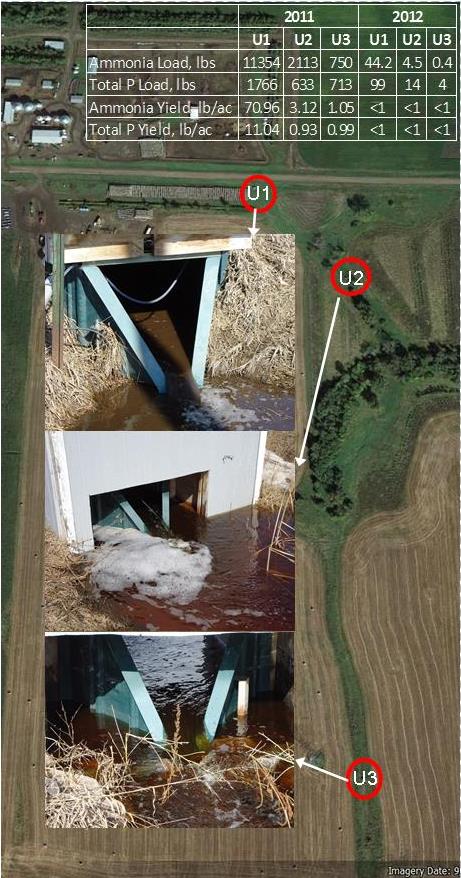Discovery Farms Program – An update from the Discovery Farm in Underwood, ND
The idea for Discovery Farms was first formulated and implemented in Wisconsin to address the concerns that environmental and water quality regulations were inconsistent with profitable agricultural production.

Similar concerns also exist in North Dakota. Farmers, ranchers, researchers, policymakers and governmental agencies in the state recognize that a balance must be reached between the maintenance of agricultural profitability and the implementation of regulations and policies that protect our natural resources. The Discovery Farms project will provide a working farm setting to collect the data needed to help these decision makers strike that balance. A Discovery Farm is a working farm or ranch voluntarily cooperating with the project to demonstrate and evaluate the effectiveness of best management practices (BMPs) at reducing environmental impacts. Currently there are 3 farms enrolled on the ND Discovery Farms Project (Underwood, Dazey and Sheldon). Each Discovery Farm addresses specific grass-roots issues that are important to the cooperating producer and the region of the state where they are located.
In 2007, NDSU, USGS, ND Department of Health and the farmer cooperator, started a Discovery Farm project near Underwood (McLean Co.). Water samples were collected between April and October from 2008 through 2012 and analyzed for selected attributes, which were used to describe water-quality in runoff and to estimate nutrients and sediments’ annual loads and yields.The following is a brief summary of the results found:
-
- Concentrations of chloride, nitrate + nitrite, and total nitrogen were not significantly different along the waterway;
- Annual loads varied by year, in response flow volume (2011 rainy year and 2012 dry year), and by site location on the landscape (higher loads at the U1 and lower loads at U3) (table on top of the picture);
- In 2012 the yields for both TP and Ammonia in the runoff where <1 lb/ac in all sites. The highest yields in the runoff where found in 2011 at U1 for both TP (11 lb/ac) and Ammonia (71 lb/ac).
- In 2012, a clean water diversion system was built around the feedlot to decrease the amount of water moving through the feedlot area, especially during snow melt in the spring. The water quality monitoring is still on-going and will continue for a couple more years to assess the effectiveness of the BMP (clean water diversion system) proposed by the farmer collaborating on this project.
Today there are Discovery Farms project in four states (WI, ND, MN, and AR). Click on the links to learn more about the Discovery Farms in those states.
Paulo Flores
Nutrient Management Specialist


